Background
The Calm Down Robot Unit helps students explore strategies for social-emotional learning, like calming down, by coding the behaviors of the 123 Robot. Self-regulation, and the ability to manage one's behavior and emotional expression, is a big part of social-emotional learning. In Lab 1, students think about the human actions associated with feelings of being out of control and in control, and how they can use Coder cards to create a project that represents human action with 123 Robot behaviors. Students first create a project to represent an over excited feeling with out of control actions, then code the opposite, to create a project to represent in control behavior. In Lab 2, students explore the concept of calming down, to create “Calm Down Codes” by representing calm down strategies that they use with 123 Robot behaviors. They wrap up the Labs by sharing the reasoning behind their “Calm Down Codes”, as well as ways they could use these projects to help themselves calm down when needed.
How are emotions connected to behaviors?
As young children are building their emotional vocabulary, their behavior tends to show their feelings before their words do. Helping children to see this connection between their actions, expressions, and feelings is an important step in ensuring that children see that they have control over their behavior — and, more importantly, that their behavior is not a reflection of their self-worth. Encourage this by clearly naming behaviors and feelings for and with students in the moment.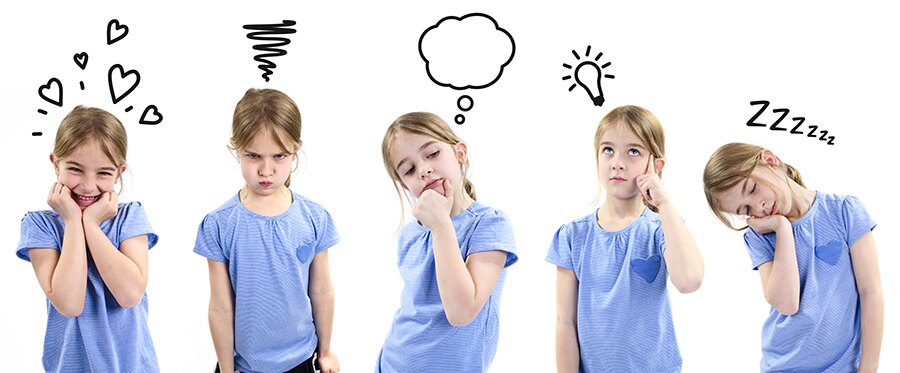
Calling attention to students prosocial behaviors and healthy emotional expression, can be a useful tool to help students recognize this connection, and is a great conversation starter to help students take ownership of their behavior. For instance, a student closing her eyes and taking a deep breath in the middle of a math lesson can prompt a range of responses from the teacher. The teacher could say something like, "Josie, I noticed you closing your eyes and taking a deep breath just now. It looked like you were trying to feel calm and stay in control. That was a great strategy to use. Is there anything else you need help with?" This highlights the student's positive behavior and self-regulation, while also giving an opportunity to engage further if the student needs it.
Why is it important for children to develop strategies for coping with strong emotions?
The development of self-regulation is a big part of the work of young children. An essential aspect of this work is learning how to cope with strong emotions in a constructive way. Children experience a range of strong feelings over the course of a day, and they need solid strategies for managing these emotions in order to be successful friends, classmates, and students. The best way for students to acquire these skills is through repeated practice over time, with the help of supportive adults. When children are able to control the behaviors associated with feelings like frustration, excitement, or anger in a prosocial manner, they gain confidence and self-respect.1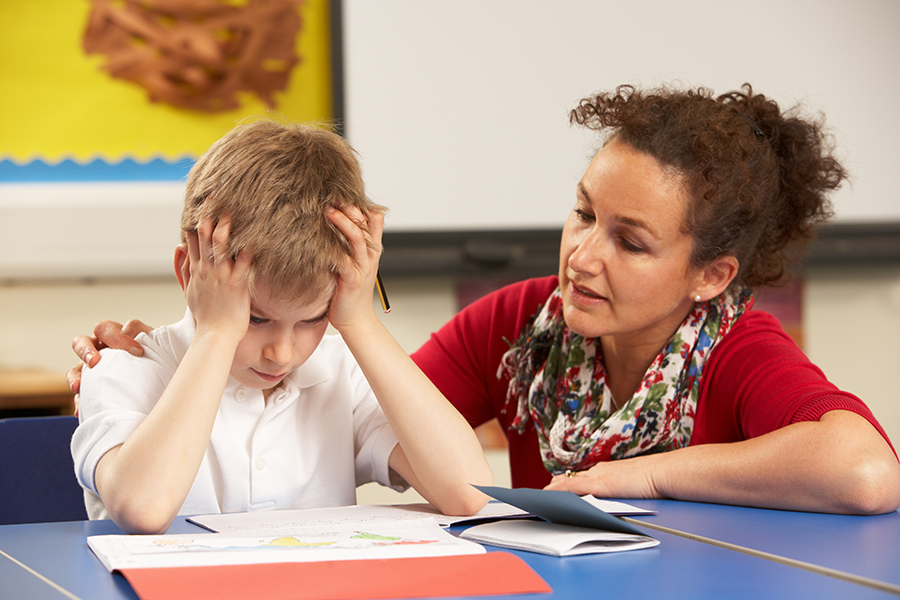
How does practicing coping strategies support the development of self regulation?
Self-regulation is the act of managing one’s thoughts and feelings to engage in goal-directed actions such as organizing behavior, controlling impulses, and solving problems constructively.2 The process of developing self-regulation continues throughout childhood. As students grow, they experience and express emotions in different ways, so need to continue to practice coping strategies in order to thrive. Teachers and parents can support this growth by providing students with opportunities to discuss, practice and refine strategies for coping with strong emotions. When done in a safe environment, this repeated practice is key to giving children tools for self-control and emotional regulation that they can begin to apply in different settings.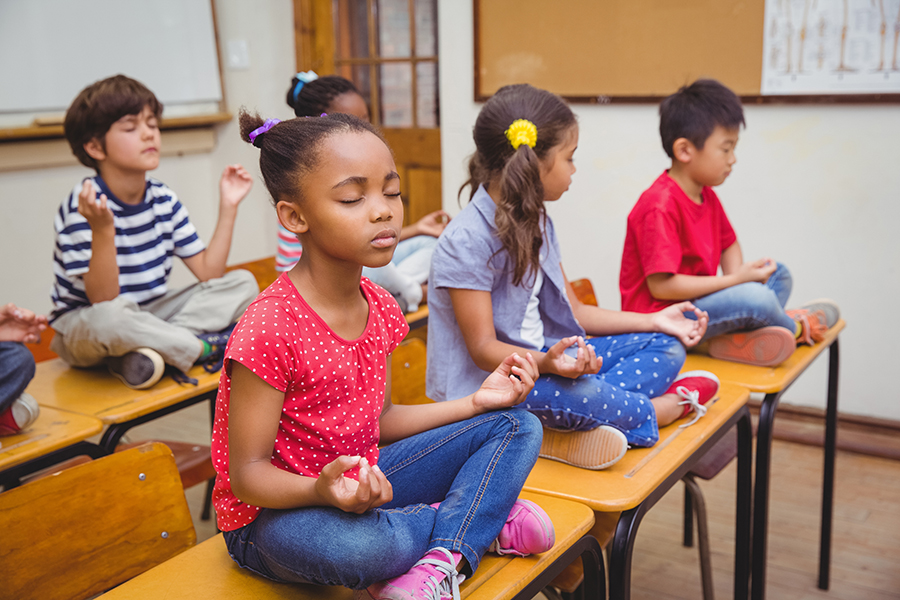
What Coder Cards Do You Need?
Below is a list of some key Coder cards used during this Unit. Other Coder cards needed to complete the Unit are listed after the table. See the Environment Setup section of the Summary in each Lab for more detailed information about organizing and distributing Coder cards to your students.
| Coder Card | Behavior |
|---|---|
 |
Starts the project when the ‘Start’ button on the Coder is pressed. |
 |
The 123 Robot will wait 4 seconds before moving on to the next Coder card in the project. |
 |
The indicator light in the center of the 123 Robot will glow blue. |
 |
The 123 Robot will play a sound similar to a doorbell chime. |
 |
The 123 Robot will turn 180 degrees to the right from its starting position. |
Offer students additional Coder cards from the Motion, Looks or Sounds categories to build “Calm Down Codes” in Play Part 2 of Lab 1, and in Play Part 2 of Lab 2.
Strategies for Teaching with the Coder in this Unit
The Coder offers an opportunity for students and teachers to engage with and share code easily, and tangibly, throughout a Lab’s activities.
Supporting pre or early readers — Coder cards are designed to support pre-readers, or early readers, using icons to represent the words of the card itself, so students can essentially read the images, if they cannot yet read the words. Encourage students to use these icon images to help them as they work to build their projects. Reinforce this by referring to the images on the Coder cards when you are naming them with students, like “The When start 123 Coder card, the one with the green arrow, always goes first.”

Check and Share code easily — Once Coder cards are loaded into the Coder, students can hold up their Coder to show their code, just as they would hold up a whiteboard with a math solution on it. Use this strategy during group instruction, as a means for checking students’ accuracy before they start their projects. You can quickly and easily see if the correct Coder cards are used, if they are inserted in the correct order, and make sure that they aren’t upside down or backwards. When checking in with groups to facilitate independent activity, look to the Coders and Coder cards to check progress.
To learn more about Using the Coder as a Teaching Tool, see this article in the VEX Library.
Troubleshooting with the Coder
Coding with the Coder and Coder cards inevitably requires some troubleshooting and debugging. While this is a valuable part of the learning process, here are some solutions to the most common issues you may come across in this Unit:
-
The Coder cards fall out when moving the Coder — When having students hold up their Coders with Coder cards in them, remind them to hold it up straight, and not to tip it sideways. If tilted to the right (or the open side of the Coder), the Coder cards can fall out. Since left and right are not always reliable for young students, encourage them not to tilt the Coder in any direction.
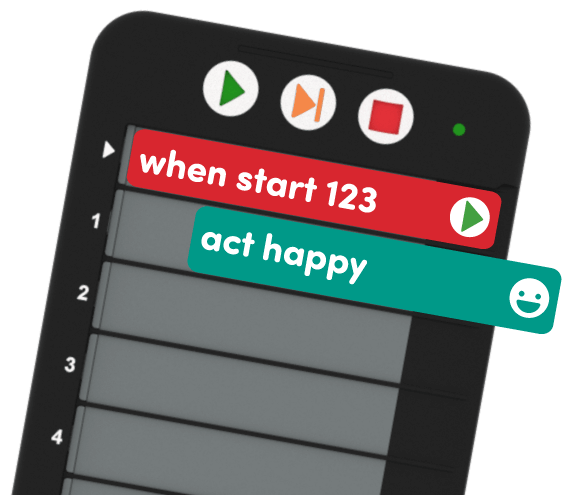
Coder cards fall out when moving the Coder -
A Coder card is oriented incorrectly — Remind students to make sure that their Coder cards are inserted in the correct orientation - with the words and images facing them, and the pictures on the right (or open side) of the Coder. If cards are upside down or backward, have students pull them out and reinsert them in the correct direction.
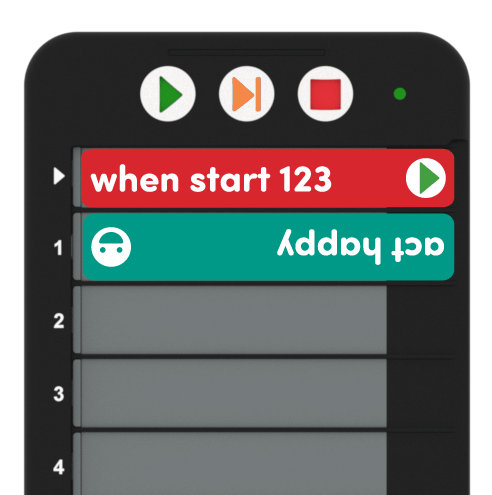
Coder card oriented incorrectly -
A Coder card slot displays a red light when running — If a red indicator light appears beside a Coder card, the Coder card may not be inserted completely into the slot. Remind students to push the Coder cards all the way in, or to take them out and reinsert them if this occurs. Watch the animation below to see an example of this.
Video file
For more information about how to use the Coder, see the Using the VEX 123 Coder VEX Library article.